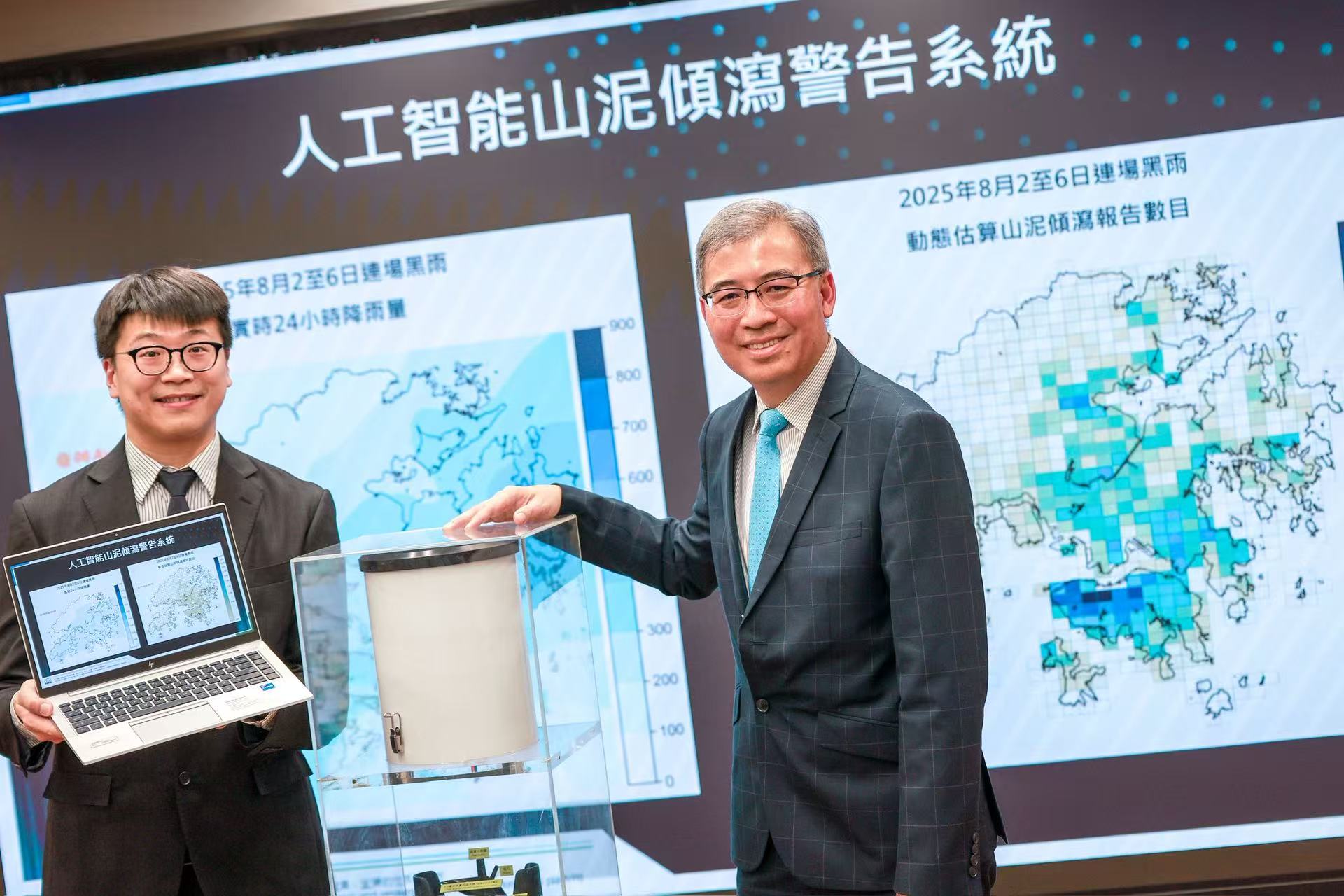
Hong Kong’s new generation of landslide warning system, which harnesses artificial intelligence to analyze a wealth of historical data, is expected to build tailor-made prediction models and boost prediction accuracy to 90 percent.
Scheduled for full deployment in 2026, the AI-powered system will enable the city to detect potential landslides earlier and with greater accuracy, better alert the public to landslide threats, and optimize the government’s emergency responses, representatives from the Geotechnical Engineering Office (GEO) said during a media briefing on Tuesday.
The upcoming fifth-generation landslip warning system, integrating AI and big data, has studied more than 380 rainfall events with documented landslides that occurred between 1996 and 2023, and has demonstrated a remarkable accuracy of over 90 percent in forecasting reported landslides — a leap from the current accuracy rate of close to 70 percent.

Edward Chu Kei-hong, a senior geotechnical engineer at the GEO focusing on slopes, said that the GEO conducted trials during this year's rainy season, starting in April and May, which involved real-time dynamic estimations. He said he was satisfied with the trial’s outcomes, and noted that optimization work is still ongoing.
The GEO’s head, Raymond Cheung Wai-man, highlighted the extensive dataset used in training the new system, which includes information about 60,000 man-made slopes, 22 million slope data points, and 2,700 landslip reports.
He also praised AI-based models for their continuous-learning capacity, and said he believes that the system will be able to further enhance the accuracy of its predictions through more data-based training. The GEO will also stay abreast of the latest developments and actively explore suitable machine learning algorithms to further strengthen the accuracy and capabilities of its landslide risk assessments in the future, added Cheung.
ALSO READ: State-accredited scholar puts SAR on safe track
Many of Hong Kong's residential areas are built near slopes, making them vulnerable to landslides during heavy rain. This danger was starkly illustrated on June 18, 1972, when landslides in Sau Mau Ping and Po Shan Road destroyed multiple structures and claimed 138 lives.
After conducting pioneering research into correlation models between rainfall and landslides, the GEO helped Hong Kong establish the world’s first regional landslide warning system in 1977, said Cheung.
Over nearly five decades, the warning system has been evolving to integrate new analytical factors and technologies. In the latest generation system, a wider range of features related to rainfall and slopes will be added, facilitating the issuance of more precise and comprehensive warnings, Cheung said.
Citing data showing that over 90 percent of fatal accidents from landslides occurred while landslip warnings were in force, Chueng reaffirmed the GEO's commitment to enhancing information dissemination. Besides territory-wide landslip warnings, he revealed that regional special landslip advisories will be issued as necessary.


